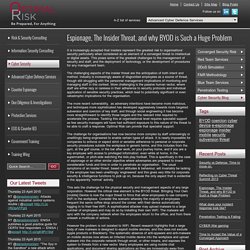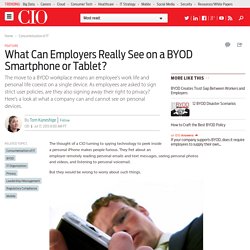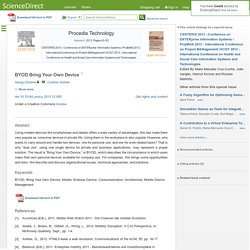

Espionage, The Insider Threat, and why BYOD is Such a Huge Problem - Optimal Risk. It is increasingly accepted that insiders represent the greatest risk to organisations’ security particularly when considered as an element of a converged threat to intellectual or digital assets.

This poses some of the greatest challenges to the management of security and staff, and the deployment of technology, or the development of procedures for any management team. The challenging aspects of the insider threat are the anticipation of both intent and method. Industry is increasingly aware of disgruntled employees as a source of threat, though still struggling with the personnel management implications of monitoring and managing staff in this context. More challenging is the passive human vector, where staff are either lazy or careless in their adherence to security protocols and individual application of sensible security practices, which lead to potentially significant or even catastrophic implications for the organisation.
However the problem is not isolated to WiFi. BYOD in the 21st Century. Google Adds BYOD Management Tools for Android. What Can Employers Really See on a BYOD Smartphone or Tablet? The thought of a CIO turning to spying technology to peek inside a personal iPhone makes people furious.

They fret about an employer remotely reading personal emails and text messages, seeing personal photos and videos, and listening to personal voicemail. But they would be wrong to worry about such things. At least that's the message from Ojas Rege, vice president of strategy at MobileIron, a mobile device management software developer. "There's a ton of confusion out there, and so the trust gap has widened," says Rege. "Employees don't really know what their employer can and can't see. . [ Related: BYOD Creates Trust Gap Between Workers and Employers ] Such is life in the brave new world of "bring your own devices" (BYOD), where work life and personal life collide on a single device. Byod_stem_final_final_submitted.pdf. An Act to promote the efficiency and adaptability of the Canadian economy by regulating certain activities that discourage reliance on electronic means of carrying out commercial activities, and to amend the Canadian Radio-television and Telecommunication.
Anti-spam legislation could impact employers’ BYOD policies. Canada’s largest management side labour and employment boutique is warning employers that Canada’s Anti-Spam Legislation could impact their “bring your own device policies.”

On January 15, 2015, section 8 of the legislation will come into force. It prohibits anyone from installing a computer program on another person’s computer system without express consent, if the installation is made in the course of commercial activity. “While there may be theories for asserting that CASL does not apply, given the significant penalties associated with non-compliance, employers who install software on employee personal devices in the course of administering BYOD policies should turn their minds to compliance,” cautions Hicks Morley Hamilton Stewart Storie in the firm’s FTR Now bulletin.
California court mandates BYOD reimbursement. An appeals court judgment in California could raise havoc among the employer BYOD plans in the state.

The ruling states that an employee who is required to use a personal cell phone for work must be compensated "...a reasonable percentage of their cell phone bills. " This judgment is based in the court's analysis of California Labor Code section 2802. Read this BYOD and the consumerization of IT Special report: The Bring Your Own Device phenomenon is reshaping the way IT is purchased, managed, delivered, and secured.
Read More The case is Cochran v. The most relevant part of Section 2802 follows: 2802(a) An employer shall indemnify his or her employee for all necessary expenditures or losses incurred by the employee in direct consequence of the discharge of his or her duties, or of his or her obedience to the directions of the employer... Data%20Privacy%20Legislation%20Review%20MobileIron.pdf. Cisco_IT_Case_Study_BYOD_Overview-4.pdf. “Protecting Android Devices Following BYOD Policy Against Data Security and Privacy Attacks. How Microsoft IT Solves BYOD Using Microsoft System Center 2012 R2 Configuration Manager and Windows Intune. BYOD Bring Your Own Device. Volume 9, 2013, Pages 43–53 CENTERIS 2013 - Conference on ENTERprise Information Systems / ProjMAN 2013 - International Conference on Project MANagement/ HCIST 2013 - International Conference on Health and Social Care Information Systems and Technologies Edited By Maria Manuela Cruz-Cunha, João Varajão, Helmut Krcmar and Ricardo Martinho Abstract Using modern devices like smartphones and tablets offers a wide variety of advantages; this has made them very popular as consumer devices in private life.

Using them in the workplace is also popular. Keywords BYOD; Bring Your Own Device; Mobile; Enduser Device; Consumerization; Architecture; Mobile Device Management References [1]Accenture (Edt.), 2011. . [21]Texiwell, N., 2011.